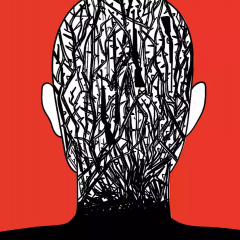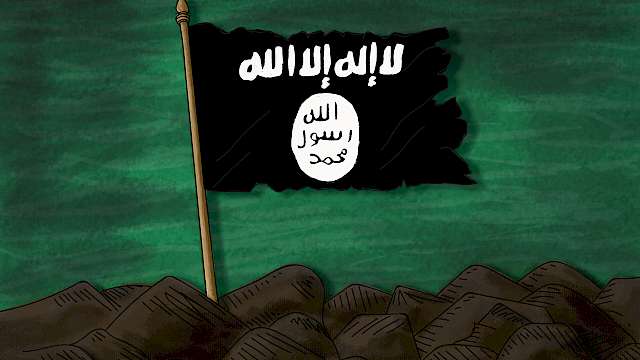Background
This report presents the findings of a systematic review of research on how, and under what circumstances, trauma might be implicated in individual journeys into, and out of, violent extremism. It builds on previous work carried out by the research team on these dynamics, including a scoping review of the literature (Lewis & Marsden, 2021), and a process of network development involving a series of workshops bringing together researchers, policymakers and practitioners to discuss the relevance of trauma and adversity to violent extremism. This process confirmed there was a nascent, but growing, body of research exploring this topic, and that there was significant practical and analytical utility in exploring these processes in greater depth.
The analysis presented in this report develops this research programme in three ways:
- Undertaking a systematic review of post-2000 empirical, academic research on trauma, adversity and violent extremism to better understand a) the prevalence of trauma in the life histories of violent extremists; and b) the relevance of trauma in interpreting pathways towards, and away from, violent extremism.
- Examining the different ways in which trauma is implicated in radicalisation pathways by synthesising this research on trauma, adversity and violent extremism with radicalisation models identified in a separate systematic review.
- Exploring how applying a trauma-informed perspective to understanding journeys into and out of violent extremism might inform research and practice.
Overview of the Report
This report consists of eight sections. The next section provides an overview of the key concepts discussed in the report, before discussing the conceptual framework that underpins our analysis. This is followed by an overview of our methodology and by three analysis sections addressing the three objectives outlined above:
- Section one sets out the evidence identified through the systematic review. Drawing on 159 studies, it discusses the different relationships that have been identified between trauma, adversity and violent extremism.
- The second section explores whether and how trauma is captured in existing radicalisation models. This draws on an analysis of 99 papers identified through a separate systematic review of radicalisation models (Corner & Taylor, 2023).
- The final section presents a more theoretical and conceptual analysis, reviewing the implications of these findings for research and practice.
The report concludes by summarising the key conclusions, implications, and recommendations for researchers, policymakers, and practitioners.
Read more
Altier, M., Boyle, E. L., Shortland, N. D., & Horgan, J. G. (2017). Why they leave: An analysis of terrorist disengagement events from eighty-seven autobiographical accounts. Security Studies, 26(2), 305-332.
Altier, M. B., Boyle, E. L., & Horgan, J. G. (2022). Terrorist transformations: The link between terrorist roles and terrorist disengagement. Studies in Conflict & Terrorism, 45(9), 753-777.
Barrelle, K. (2015). Pro-integration: Disengagement from and life after extremism. Behavioral Sciences of Terrorism and Political Aggression, 7(2), 129-142.
Barth, L., Kaiser, P., Tuncel-Langbehn, G., Ruettner, B., & Goetzmann, L. (2022). The inner and the outer foreign territory: A qualitative study measuring ambiguity tolerance within young Muslims living in Germany. Journal of International Migration and Integration, 24, 507–525.
Becker, M. H., Decker, S. H., LaFree, G., Pyrooz, D. C., Ernest, K., & James, P. A. (2020). A comparative study of initial involvement in gangs and political extremism. Terrorism and Political Violence.
Berko, A., & Erez, E. (2007). Gender, Palestinian women, and terrorism: Women's liberation or oppression? Studies in Conflict & Terrorism, 30(6), 493-519.
Bhui, K., Everitt, B., & Jones, E. (2014). Might depression, psychosocial adversity, and limited social assets explain vulnerability to and resistance against violent radicalisation? PLoS ONE, 9(9).
Bhui, K., Silva, M. J., Topciu, R. A., & Jones, E. (2016). Pathways to sympathies for violent protest and terrorism. The British Journal of Psychiatry, 209(6), 483-490.
Bhui, K., Otis, M., Silva, M. J., Halvorsrud, K., Freestone, M. & Jones, E. (2020). Extremism and common mental illness: Cross-sectional community survey of white British and Pakistani men and women living in England. The British Journal of Psychiatry, 217, 547–554.
Bjørgo, T. (2005). Conflict processes between youth groups in a Norwegian City: Polarisation and revenge. European Journal of Crime, Criminal Law and Criminal Justice, 13(1), 44–74.
Bont, E. (2020). Moral injury in Provisional IRA members: Preliminary evidence of moral beliefs injuring, protecting & disillusioning. Terrorism and Political Violence.
Botha, A. (2014). Political socialization and terrorist radicalization among individuals who joined al-Shabaab in Kenya. Studies in Conflict & Terrorism, 37(11), 895-919.
Bouzar, D. (2017). A novel motivation-based conceptual framework for disengagement and de-radicalization programs. Sociology and Anthropology 5(8): 600-614.
Bronsard, G., Cohen, D., Diallo, I., Pellerin, H., Varnoux, A., Podlipski, M., Gerardin, P., Boyer, L., & Campelo, N. (2022). Adolescents Engaged in Radicalisation and Terrorism: A Dimensional and Categorical Assessment. Frontiers in Psychiatry, 12.
Bubolz, B. F., & Simi, P. (2015). Leaving the world of hate: Life-course transitions and self-change. American Behavioral Scientist, 59(12), 1588-1608 to bibliography.
Campelo, N., Bouzar, L., Oppetit, A., Pellerin, H., Hefez, S., Bronsard, G., Cohen, D., & Bouzar, D. (2018a). Joining the Islamic State from France between 2014 and 2016: An observational follow-up study. Palgrave Communications, 4(1).
Campelo, N., Oppetit, A., Thompson, C., Cohen, D., & Louet, E. (2022). A clinical and psychopathological approach to radicalization among adolescents. Frontiers in Psychiatry, 13, 788154-788154.
Candilis, P. J., Cleary, S. D., Dhumad, S., Dyer, A. R., & Khalifa, N. (2023). Classifying terrorism: A latent class analysis of primary source socio-political and psychological data. Behavioral Sciences of Terrorism and Political Aggression, 15(1), 64-81.
Canetti, D., Cavari, A., Rapaport, C., Shalev, H., & Hobfoll, S. E. (2021). Individual exposure to terror and political attitudes: A physiologically-based model of militancy. Terrorism and Political Violence, 33(5), 1055-1070.
Canetti, D., Hirschberger, G., Rapaport, C., Elad-Strenger, J., Ein-Dor, T., Rosenzveig, S., ... & Hobfoll, S. E. (2018). Collective trauma from the lab to the real world: The effects of the holocaust on contemporary Israeli political cognitions. Political Psychology, 39(1), 3-21.
Canetti, D., Hirsch-Hoefler, S., Rapaport, C., Lowe, R. D., & Muldoon, O. T. (2018). Psychological barriers to a peaceful resolution: Longitudinal evidence from the Middle East and Northern Ireland. Studies in Conflict & Terrorism, 41(8), 660-676.
Canetti-Nisim, D., Halperin, E., Sharvit, K., & Hobfoll, S. E. (2009). A new stress-based model of political extremism. Journal of Conflict Resolution, 53(3), 363-389.
Capellan, J. A., & Anisin, A. (2018). A distinction without a difference? Examining the causal pathways behind ideologically motivated mass public shootings. Homicide Studies: An Interdisciplinary & International Journal, 22(3), 235-255.
Carroll II, D. W. (2022). Leaving Hate: Social Work and the Journey Out of Far-Right Extremism. Indiana University-Purdue University Indianapolis: Unpublished PhD Thesis.
Cherney, A., Belton, E., Norham, S. A. B., & Milts, J. (2020). Understanding youth radicalisation: an analysis of Australian data. Behavioral Sciences of Terrorism and Political Aggression.
Cherney, A., & Belton, E. (2021). Evaluating case-managed approaches to counter radicalization and violent extremism: An example of the Proactive Integrated Support Model (PRISM) Intervention. Studies in Conflict & Terrorism, 44(8), 625-645.
Chima, J. S. (2020). Are participants in ethnonationalist movements rational-choosers, socially-embedded actors, or psychologically-instinctive beings? Motivations and worldviews of Sikh separatists from India. Studies in Conflict & Terrorism.
Clemmow, C., Bouhana, N., & Gill, P. (2020a). Analyzing person-exposure patterns in lone-actor terrorism: Implications for threat assessment and intelligence gathering. Criminology and Public Policy, 19(2), 451-482.
Clemmow, C., Schumann, S., Salman, N. L., & Gill, P. (2020b). The Base Rate Study: developing base rates for risk factors and indicators for engagement in violent extremism. Journal of Forensic Sciences, 65(3), 865-881.
Clemmow, C., Gill, P., Bouhana, N., Silver, J., & Horgan, J. (2020c). Disaggregating lone-actor grievance-fuelled violence: comparing lone-actor terrorists and mass murderers. Terrorism and Political Violence.
Clemmow, C., Bouhana, N., Marchment, Z., & Gill, P. (2022). Vulnerability to radicalisation in a general population: a psychometric network approach. Psychology, Crime & Law, 1-29.
Clemmow, C., Rottweiler, B., Wolfowicz, M., Bouhana, N., Marchment, Z., & Gill, P. (2023). The Whole Is Greater than the Sum of Its Parts: Risk and Protective Profiles for Vulnerability to Radicalization. Justice Quarterly, 1-27.
Corner, E., Bouhana, N., & Gill, P. (2019). The multifinality of vulnerability indicators in lone-actor terrorism. Psychology, Crime & Law, 25(2), 111-132.
Corner, E., & Gill, P. (2015). A false dichotomy? Mental illness and lone-Actor terrorism. Law & Human Behavior, 39(1), 23-34.
Corner, E., Taylor, H., & Clemmow, C. (2021). Assessing the behavioural trajectories of terrorists: The role of psychological resilience. Dynamics of Asymmetric Conflict, 1-27.
Corner, E. & Gill, P. (2020). Psychological distress, terrorist involvement and disengagement from terrorism: A sequence analysis approach. Journal of Quantitative Criminology, 36, 499–526.
Corner, E. & Gill, P. (2021). Psychological distress and terrorist engagement: Measuring, correlating and sequencing its onset with negative life events, social factors and protective factors’. Transcultural Psychiatry.
Cottee, S., & Cunliffe, J. (2020). Watching ISIS: How young adults engage with official English-language ISIS videos. Studies in Conflict & Terrorism, 43(3), 183-207.
DeMichele, M., McCann, W. S., Blee, K., & Simi, P. (2022). Findings and implications from a project on white supremacist entry and exit pathways. Perspectives on Terrorism, 16(5), 73-81.
De Waele, M. S., & Pauwels, L. (2014). Youth involvement in politically motivated violence: why do social integration, perceived legitimacy, and perceived discrimination matter?. International Journal of Conflict and Violence (IJCV), 8(1), 134-153.
Dhumad, S., Candilis, P. J., Cleary, S. D., Dyer, A. R., & Khalifa, N. (2020). Risk factors for terrorism: a comparison of family, childhood, and personality risk factors among Iraqi terrorists, murderers, and controls. Behavioral Sciences of Terrorism and Political Aggression, 12(1), 72-88.
Dhumad, S., Candilis, P. J., Cleary, S. D., Dyer, A. R., & Khalifa, N. R. (2023). Distinguishing lone from group actor terrorists: A comparison of attitudes, ideologies, motivations, and risks. Journal of Forensic Sciences, 68(1), 198-206.
Dillon, L. (2023). Investigating Key Risk Factors Across Violent and Non-violent Extremists in the United States. New York: CUNY, Unpublished PhD Thesis.
Doering, S., Davies, G., & Corrado, R. (2020). Reconceptualizing Ideology and Extremism: Toward an Empirically-Based Typology. Studies in Conflict & Terrorism.
Duits, N., Alberda, D. L., & Kempes, M. (2022). Psychopathology of young terrorist offenders, and the interaction with ideology and grievances. Frontiers in Psychiatry, 239.
Eggert, J. P. (2018). Female Fighters and Militants During the Lebanese Civil War: Individual Profiles, Pathways, and Motivations. Studies in Conflict & Terrorism, 1-30.
Ellis, B. H., Abdi, S. M., Horgan, J., Miller, A. B., Saxe, G. N. & Blood, E. (2015). Trauma and openness to legal and illegal activism among Somali refugees. Terrorism and Political Violence, 27, 857–883.
Ellis, B. H., Abdi, S. M., Lazarevic, V., White, M. T., Lincoln, A. K., Stern, J. E., & Horgan, J. G. (2016). Relation of psychosocial factors to diverse behaviors and attitudes among Somali refugees. American Journal of Orthopsychiatry, 86(4), 393-408.
Ellis, B. H., Sideridis, G., Miller, A. B., Abdi, S. M., & Winer, J. P. (2021). Trauma, trust in government, and social connection: How social context shapes attitudes related to the use of ideologically or politically motivated violence. Studies in Conflict and Terrorism, 44(12), 1050-1067.
Ezekiel, R. S. (2002). An ethnographer looks at neo-Nazi and Klan groups: The racist mind revisited. American Behavioral Scientist, 46(1), 51-71.
Fair, C. C., & Hamza, A. (2018). Women and support for terrorism in Pakistan. Terrorism & Political Violence, 30(6), 962–983.
Ferguson, N., Burgess, M., & Hollywood, I. (2010). Who are the victims? Victimhood experiences in postagreement Northern Ireland. Political Psychology, 31(6), 857-886.
Ferguson, N., & McAuley, J. W. (2020). Staying engaged in terrorism: Narrative accounts of sustaining participation in violent extremism. Frontiers in Psychology, 11.
Ferguson, N., & McAuley, J. W. (2021). Dedicated to the cause: identity development and violent extremism. European Psychologist, 26(1), 6-14.
Fink, D.S. & Galea, S. (2015). Life course epidemiology of trauma and related psychopathology in civilian populations. Current Psychiatry Reports, 17, 31.
Finkel, S. E., McCauley, J. F., Neureiter, M., & Belasco, C. A. (2021). Community violence and support for violent extremism: Evidence from the Sahel. Political Psychology, 42(1), 143-161.
Fisher-Smith, A., Sullivan, C. R., Macready, J. D., & Manzi, G. (2020). Identity reconfiguration and the core needs framework: Exit narratives among former far-right extremists. Journal for Deradicalization, 22, 1-37.
Frounfelker, R. L., Johnson-Lafleur, J., Montmagny Grenier, C., Duriesmith, D., & Rousseau, C. (2023). “Between the self and the other”: clinical presentation of male supremacy in violent extremists. Behavioral Sciences of Terrorism and Political Aggression, 1-21.
Gill, P. (2012). Assessing contemporary trends and future prospects in the study of the suicide bomber. Negotiation and Conflict Management Research, 5(3), 239-252.
Gill, P., Corner, E., McKee, A., Hitchen, P., & Betley, P. (2019). What do closed source data tell us about lone actor terrorist behavior? A research note. Terrorism and Political Violence.
Gill, P., Horgan, J., Corner, E., & Silver, J. (2016). Indicators of lone actor violent events: The problems of low base rates and long observational periods. Journal of Threat Assessment and Management, 3(3-4), 165-173.
Gill, P., Horgan, J., & Deckert, P. (2014). Bombing alone: Tracing the motivations and antecedent behaviors of lone-actor terrorists. Journal of Forensic Sciences, 59(2), 425-435.
Gill, P., Silver, J., Horgan, J., Corner, E., & Bouhana, N. (2021). Similar crimes, similar behaviors? Comparing lone-actor terrorists and public mass murderers. Journal of Forensic Sciences, 66(5), 1797–1804.
Gómez, Á., Martínez, M., Martel, F. A., López-Rodríguez, L., Vázquez, A., Chinchilla, J., ... & Swann, W. B. (2021). Why people enter and embrace violent groups. Frontiers in Psychology, 11, 614657.
Goodman, R. D. (2013). The Transgenerational Trauma and Resilience Genogram. Counselling Psychology Quarterly, 26(3-4), 386–405.
Gough D (2007). Weight of evidence: A framework for the appraisal of the quality and relevance of evidence. Research Papers in Education, 22 (2): 213-228
Gould, A. (2021). Hate exhaustion, emotional support, and desistance from white supremacist groups. Journal of Qualitative Criminal Justice and Criminology, 10.
Green, H. L. (2018). Vulnerabilities to engagement in violent extremism. Birmingham: University of Birmingham: Unpublished PhD Thesis.
Grimbergen, C., & Fassaert, T. (2022). Occurrence of Psychiatric Disorders, Self-Sufficiency Problems and Adverse Childhood Experiences in a Population Suspected of Violent Extremism. Frontiers in Psychiatry, 13.
Groppi, M. (2017). An empirical analysis of causes of Islamist radicalisation: Italian case study. Perspectives on Terrorism, 11(1), 68-76.
Hall, J. (2016). Are migrants more extreme than locals after war? Evidence from a simultaneous survey of migrants in Sweden and locals in Bosnia. Journal of Conflict Resolution, 60(1), 89-117.
Harpviken, A. N. (2021). Psychological vulnerabilities and extremism among Norwegian youth: A structural equation model using a large-n sample. Peace and Conflict: Journal of Peace Psychology, 27(2), 212–224.
Haugstvedt, H., & Koehler, D. (2021). Armed and explosive? An explorative statistical analysis of extremist radicalization cases with military background. Terrorism and Political Violence.
Haymoz, S., Baier, D., Jacot, C., Manzoni, P., Kamenowski, M., & Isenhardt, A. (2021). Gang members and extremists in Switzerland: Similarities and differences. European Journal of Criminology.
Hirsch-Hoefler, S., Canetti, D., Rapaport, C., & Hobfoll, S. E. (2016). Conflict will Harden your Heart: Exposure to violence, psychological distress, and peace barriers in Israel and Palestine. British Journal of Political Science, 46(4), 845-859.
Hobfoll, S.E., Canetti-Nisim, D., & Johnson, R.J. (2006). Exposure to terrorism, stress-related mental health symptoms, and defensive coping among Jews and Arabs in Israel. Journal of Consulting and Clinical Psychology, 74(2), 207-21.
Höffler, K., Meyer, M., & Möller, V. (2022). Risk Assessment—the Key to More Security? Factors, Tools, and Practices in Dealing with Extremist Individuals. European Journal on Criminal Policy and Research, 28(2), 269-295.
Horgan, J. (2005). The Psychology of Terrorism. London: Routledge.
Ivaskevics, K., & Haller, J. (2022). Risk Matrix for Violent Radicalization: A Machine Learning Approach. Frontiers in Psychology, 13.
Jacques, K., & Taylor, P. J. (2008). Male and female suicide bombers: Different sexes, different reasons? Studies in Conflict & Terrorism, 31(4), 304-326.
Jahnke, S., Koch, T., Goede, L., Schröder, C. P., Lehmann, L., & Beelmann, A. (2021). Legal cynicism, but not depression, mediates the link between adverse environmental factors and youth’s political violence support. Psychology, Crime & Law.
Jasko, K., LaFree, G., & Kruglanski, A. (2017). Quest for significance and violent extremism: The case of domestic radicalization. Political Psychology, 38(5), 815-831.
Jensen, M., Atwell Seate, A., & James, P. (2020a). Radicalization to violence: A pathway approach to studying extremism. Terrorism and Political Violence, 32(5), 1067-1090.
Jensen, M., James, P., & Yates, E. (2020b). Contextualizing disengagement: How exit barriers shape the pathways out of far-right extremism in the United States. Studies in Conflict & Terrorism.
Jensen, M. A., & Kane, S. (2021). QAnon-inspired violence in the United States: An empirical assessment of a misunderstood threat. Behavioral Sciences of Terrorism and Political Aggression, 1–19.
Johnson, R. J., Canetti, D., Palmieri, P. A., Galea, S., Varley, J., &.Hobfoll, S. E. (2009). A prospective study of risk and resilience factors associated with posttraumatic stress symptoms and depression symptoms among Jews and Arabs exposed to repeated acts of terrorism in Israel. Psychological Trauma: Theory, Research, Practice, and Policy, 1(4), 291–311.
Jones, D. A., & Dawson, L. L. (2021). Re-examining the explanations of convert radicalization in Salafi-Jihadist terrorism with evidence from Canada. Behavioral Sciences of Terrorism and Political Aggression.
Kenyon, J., Binder, J. F., & Baker-Beall, C. (2023). Online radicalization: Profile and risk analysis of individuals convicted of extremist offences. Legal and Criminological Psychology, 28(1), 74-90.
Kizilhan, J., & Noll-Hussong, M. (2018). Post-traumatic stress disorder among former Islamic State child soldiers in northern Iraq. The British Journal of Psychiatry, 213(1), 425-429.
Klausen, J., Libretti, R., Hung, B. W. K., & Jayasumana, A. P. (2020). Radicalization trajectories: An evidence-based computational approach to dynamic risk assessment of “Homegrown” Jihadists. Studies in Conflict & Terrorism, 43(7), 588-615.
Kleinmann, S. M. (2012). Radicalization of homegrown Sunni militants in the United States: Comparing converts and non-converts. Studies in Conflict & Terrorism, 35(4), 278-297.
Knight, S., Keatley, D., & Woodward, K. (2019). Comparing the different behavioral outcomes of extremism: A comparison of violent and non-violent extremists, acting alone or as part of a group. Studies in Conflict & Terrorism.
Knight, S., Woodward, K., & Lancaster, G. L. J. (2017). Violent versus nonviolent actors: An empirical study of different types of extremism. Journal of Threat Assessment and Management, 4(4), 230-248.
Koca, G. (2012). Socio Demographic and Motivational Differences Between Active Participants And Supporters In PKK Terrorist Organization. Virginia Commonwealth University: Unpublished PhD Thesis.
Lankford, A. (2013). A comparative analysis of suicide terrorists and rampage, workplace, and school shooters in the United States from 1990 to 2010. Homicide Studies, 17(3), 255–274
Laor, N., Yanay-Shani, A., Wolmer, L., & Khoury, O. (2010). A trauma-like model of political extremism: psycho-political fault lines in Israel Laor et al. A trauma-like model of political extremism. Annals of the New York Academy of Sciences, 1208(1), 24-31.
Latif, M., Blee, K., DeMichele, M., & Simi, P. (2018). How emotional dynamics maintain and destroy white supremacist groups. Humanity & Society, 42(4), 480-501.
Laufer, A., Shechory, M., & Solomon, Z. (2009). The association between right-wing political ideology and youth distress. Child & Adolescent Social Work Journal, 26(1), 1-13.
Lemieux, A. F., & Asal, V. H. (2010). Grievance, social dominance orientation, and authoritarianism in the choice and justification of terror versus protest. Dynamics of Asymmetric Conflict, 3(3), 194-207.
Levinsson, A., Miconi, D., Li, Z., Frounfelker, R. L., & Rousseau, C. (2021). Conspiracy theories, psychological distress, and sympathy for violent radicalization in young adults during the covid-19 pandemic: A cross-sectional study. International Journal of Environmental Research and Public Health, 18(15).
Levinsson, A., Frounfelker, R. L., Miconi, D., & Rousseau, C. (2022). Violent radicalization during the COVID-19 pandemic: at the intersection of gender, conspiracy theories and psychological distress. Journal for Deradicalization (33), 221-254.
Lewis, J. & Marsden, S. (2021). Trauma, Adversity and Violent Extremism. Lancaster: Centre for Research and Evidence on Security Threats (CREST).
Lewis, J., Marsden, S., Cherney, A., Zeuthen, M., Bélanger, J. J., Zubareva, A., Brandsch, J., & Lubrano, M. (2023). PROTOCOL: Case management interventions seeking to counter radicalisation to violence: A systematic review of tools and approaches. Campbell Systematic Reviews, e1301.
Li, Z. Y., Frounfelker, R. L., Miconi, D., Levinsson, A., & Rousseau, C. (2023). Violent Radicalization, Mental Health, and Gender Identity: Considerations for Future Research. Journal of Nervous & Mental Disease, 211(3), 244-247.
Lindsay, L. J. A. (2021). An Exploratory Test of Far-Right Extremists Protective and Putative (Risk) Factors; in Both Violent and Non-violent Offenders Using the Extremist Crime Database. Michigan State University: Unpublished PhD Thesis.
Logan, M. K., Windisch, S., & Simi, P. (2022). Adverse childhood experiences (ACE), adolescent misconduct, and violent extremism: A comparison of former left-wing and right-wing extremists. Terrorism and Political Violence.
Lupu, N. and Peisakhin, L. (2017), The legacy of political violence across generations. American Journal of Political Science, 61, 836-851.
Mattsson, C. & Johansson, T. (2020). Talk is silver and silence is gold? Assessing the impact of public disengagement from the extreme right on deradicalization. Journal for Deradicalization, 24, 79–112.
McEvoy, K., Shirlow, P., & McElrath, K. (2004). Resistance, transition and exclusion: Politically motivated ex-prisoners and conflict transformation in Northern Ireland. Terrorism and Political Violence, 16(3), 646-670.
Merari, A., Diamant, I., Bibi, A., Broshi, Y., & Zakin, G. (2010). Personality characteristics of “self martyrs”/“suicide bombers” and organizers of suicide attacks. Terrorism and Political Violence, 22(1), 87-101.
Merari, A., Fighel, J., Ganor, B., Lavie, E., Tzoreff, Y., & Livne, A. (2009). Making Palestinian “martyrdom operations”/“suicide attacks”: Interviews With would-be perpetrators and organizers. Terrorism and Political Violence, 22(1), 102-119.
Merari, A., & Ganor, B. (2020). Interviews with, and tests of, Palestinian independent assailants. Terrorism and Political Violence.
Miconi, D., Calcagnì, A., Mekki-Berrada, A., & Rousseau, C. (2021). Are there local differences in support for violent radicalization? A Study on college students in the province of Quebec, Canada. Political Psychology, 42(4), 637-658.
Miconi, D., Levinsson, A., Frounfelker, R. L., Li, Z. Y., Oulhote, Y., & Rousseau, C. (2022). Cumulative and independent effects of experiences of social adversity on support for violent radicalization during the COVID-19 pandemic: the mediating role of depression. Social Psychiatry & Psychiatric Epidemiology, 57(6), 1221-1233.
Moeller, M. J., & Scheithauer, H. (2022). Developmental and biographical issues in radicalization pathways: A comparative case analysis of homegrown German convicts of Islamist terrorism-related offenses. Terrorism and Political Violence, 1-20.
Mohammed, R., & Neuner, F. (2022b). Putative juvenile terrorists: the relationship between multiple traumatization, mental health, and expectations for reintegration among Islamic State recruited adolescent and young adult fighters. Conflict & Health, 16(1), 1-12.
Mohammed, R., & Neuner, F. (2022a). War trauma, mental health, aggression, and violent-extremism among former ISIS terrorists. Journal of Affective Disorders Reports, 10.
Mordeno, I. G., Badawi, J. K., Marcera, J. L., Ramos, J. M., & Cada, P. B. (2020). Psychological distress and perceived threat serially mediate the relationship between exposure to violence and political exclusionist attitude. Current Psychology: A Journal for Diverse Perspectives on Diverse Psychological Issues.
Morris, A., & Reid Meloy, J. (2020). A preliminary report of psychiatric diagnoses in a Scottish county sample of persons of national security concern. Journal of Forensic Sciences, 65(5), 1638-1645.
Moskalenko, S., González, J. F.-G., Kates, N., & Morton, J. (2022). Incel ideology, radicalization and mental health: A survey study. The Journal of Intelligence, Conflict, and Warfare, 4(3), 1-29.
Moskalenko, S., Kates, N., González, J. F.-G., & Bloom, M. (2022). Predictors of radical intentions among Incels: A survey of 54 self-identified Incels. Journal of Online Trust and Safety, 1(3).
Nivette, A., Eisner, M., & Ribeaud, D. (2017). Developmental predictors of violent extremist attitudes: A test of general strain theory. Journal of Research in Crime and Delinquency, 54(6), 755-790
Noor, H. (2021). The Family Context and It's Role in Making Jihadists: The Case of Jihadist Families in Indonesia. Australian National University: Unpublished PhD Thesis.
Nuraniyah, N. (2018). Not just brainwashed: Understanding the radicalization of Indonesian female supporters of the Islamic State. Terrorism and Political Violence, 30(6), 890-910.
Oppetit, A., Campelo, N., Bouzar, L., Pellerin, H., Hefez, S., Bronsard, G., Bouzar, D., & Cohen, D. (2019). Do radicalized minors have different social and psychological profiles from radicalized adults? Frontiers in Psychiatry, 10(644).
Özeren, S., Sever, M., Yilmaz, K., & Sözer, A. (2014). Whom do they recruit? Profiling and recruitment in the PKK/KCK. Studies in Conflict & Terrorism, 37(4), 322-347.
Öztop, F. A. (2022). Motivational factors of Turkish foreign terrorist fighters in ISIS. Middle Eastern Studies, 58(4), 553-572.
Pedersen, W., Vestel, V. & Bakken, A. (2017). At risk for radicalization and jihadism? A population-based study of Norwegian adolescents. Cooperation and Conflict, 53(1), 61-83.
Perry, S., Hasisi, B., & Perry, G. (2018). Who is the lone terrorist? A study of vehicle-borne attackers in Israel and the West Bank. Studies in Conflict & Terrorism, 41(11), 899-913.
Pfundmair, M., Aßmann, E., Kiver, B., Penzkofer, M., Scheuermeyer, A., Sust, L. & Schmidt, H. (2019). Pathways toward Jihadism in Western Europe: An empirical exploration of a comprehensive model of terrorist radicalization. Terrorism and Political Violence.
Redmond, S., Jones, N. M., Holman, E. A., & Silver, R. C. (2019). Who watches an ISIS beheading—And why. American Psychologist, 74(5), 555.
Reeve, Z. (2020) Repeated and extensive exposure to online terrorist content: Counter-Terrorism Internet Referral Unit perceived stresses and strategies. Studies in Conflict & Terrorism.
Rink, A., & Sharma, K. (2018). The determinants of religious radicalization: Evidence from Kenya. Journal of Conflict Resolution, 62(6), 1229-1261.
Rodermond, E., & Weerman, F. (2021). The families of Dutch terrorist suspects: Risk and protective factors among parents and siblings. Monatsschrift für Kriminologie und Strafrechtsreform, 104(3),271-282.
Rousseau, C., Hassan, G., Miconi, D., Lecompte, V., Mekki-Berrada, A., El Hage, H., & Oulhote, Y. (2019). From social adversity to sympathy for violent radicalization: The role of depression, religiosity and social support. Archives of Public Health, 77(1).
Rousseau, C., Miconi, D., Frounfelker, R. L., Hassan, G., & Oulhote, Y. (2020). A repeated cross-sectional study of sympathy for violent radicalization in Canadian college students. American Journal of Orthopsychiatry, 90(4), 406-418.
Rousseau, C., Oulhote, Y., Lecompte, V., Mekki-Berrada, A., Hassan, G., & El Hage, H. (2021). Collective identity, social adversity and college student sympathy for violent radicalization. Transcultural Psychiatry, 58(5), 654-668.
Rousseau, C., Frounfelker, R., Ngov, C., & Crocker, A. (2022). Clinical Services Addressing Violent Extremism: The Quebec Model. International Journal of Forensic Mental Health, 1-11.
Schröder, C. P., Bruns, J., Lehmann, L., Goede, L.-R., Bliesener, T., & Tomczyk, S. (2022). Radicalization in adolescence: The identification of vulnerable groups. European Journal on Criminal Policy and Research, 28(2), 177-201.
Schutte, S., Ruhe, C., & Sahoo, N. (2023). How fear of violence drives intergroup conflict: Evidence from a panel survey in India. Terrorism and Political Violence, 35(2), 229-247.
Shirlow, P. (2014). Rejection, shaming, enclosure, and moving on: Variant experiences and meaning among Loyalist former prisoners. Studies in Conflict & Terrorism, 37(9), 733-746.
Sieckelinck, S., Sikkens, E., van San, M., Kotnis, S., & De Winter, M. (2019). Transitional journeys into and out of extremism. A biographical approach. Studies in Conflict & Terrorism, 42(7), 662-682.
Sikkens, E., van San, M., Sieckelinck, S., & de Winter, M. (2017). Parental influence on radicalization and de-radicalization according to the lived experiences of former extremists and their families. Journal for Deradicalization(12), 192-226.
Silver, J., Horgan, J., & Gill, P. (2019). Shared struggles? Cumulative strain theory and public mass murderers from 1990 to 2014. Homicide Studies: An Interdisciplinary & International Journal, 23(1), 64-84.
Simi, P., Sporer, K. & Bubolz, B. F. (2016). Narratives of childhood adversity and adolescent misconduct as precursors to violent extremism: A life-course criminological approach. Journal of Research in Crime and Delinquency, 53(4), 536–563.
Simi, P., Windisch, S. Harris, D., & Ligon, G. (2019). Anger from within: The role of emotions in disengagement from violent extremism. Journal of Qualitative Criminal Justice & Criminology, 7(2).
Skrodzka, M., Kende, A., Faragó, L., & Bilewicz, M. (2022). “Remember that we suffered!” The effects of historical trauma on anti-Semitic prejudice. Journal of Applied Social Psychology, 52(5), 341-350.
Snook, D. W., Fodeman, A. D., Kleinmann, S. M., & Horgan, J. G. (2021). Crisis as catalyst: Crisis in conversion to Islam related to radicalism intentions. Terrorism and Political Violence.
Speckhard, A. & Ahkmedova, K. (2006). The making of a martyr: Chechen suicide terrorism. Studies in Conflict and Terrorism, 29(5), 429–492.
Speckhard, A. & Ellenberg, M. D. (2020). ISIS in their own words: recruitment history, motivations for joining, travel, experiences in ISIS, and disillusionment over time – analysis of 220 in-depth interviews of ISIS returnees, defectors and prisoners. Journal of Strategic Security, 13(1), 82–127.
Speckhard, A. & Shajkovci, A. (2019). The Jihad in Kenya: Understanding Al-Shabaab recruitment and terrorist activity inside Kenya—in their own words. African Security, 12(1), 3-61.
Speckhard, A., Ellenberg, M., Morton, J., & Ash, A. (2021). Involuntary celibates’ experiences of and grievance over sexual exclusion and the potential threat of violence among those active in an online incel forum. Journal of Strategic Security, 14, 89–121.
Speckhard, A., & Ellenberg, M. (2022a). The effects of Assad’s atrocities and the call to foreign fighters to come to Syria on the rise and fall of the ISIS Caliphate. Behavioral Sciences of Terrorism and Political Aggression, 14(2), 169-185.
*Speckhard, A., & Ellenberg, M. (2022b). Self-reported psychiatric disorder and perceived psychological symptom rates among involuntary celibates (incels) and their perceptions of mental health treatment. Behavioral Sciences of Terrorism and Political Aggression, 1-18.
Stemmler, M., Endres, J., King, S., Ritter, B., & Becker, K. (2021). Psychological differences between radicalized and non-radicalized Muslim prisoners: A qualitative analysis of their frame alignment. Monatsschrift fur Kriminologie und Strafrechtsreform, 104(3), 283-297.
Teymur, S. (2007). A conceptual map for understanding the terrorist recruitment process: Observation and analysis of DHKP/C, PKK, and Turkish Hezbollah terrorist organizations Denton, TX: University of North Texas: Unpublished PhD Thesis.
Thijssen, G., Masthoff, E., Sijtsema, J., & Bogaerts, S. (2021). Understanding violent extremism: Socio-demographic, criminal and psychopathological background characteristics of detainees residing in Dutch terrorism wings. Criminology & Criminal Justice, 17488958211049019.
Van der Heide, E., & Huurman, R. (2016). Suburban bliss or disillusionment: Why do terrorists quit? Journal for Deradicalization (8), 1-24.
van Leyenhorst, M., & Andreas, A. (2017). Dutch suspects of terrorist activity: A Study of their biographical backgrounds based on primary sources. Journal for Deradicalization, (12), 309-344.
Victoroff, J., Quota, S., Adelman, J. R., Celinska, B., Stern, N., Wilcox, R., & Sapolsky, R. M. (2010). Support for religio-political aggression among teenaged boys in Gaza: Part I: Psychological findings. Aggressive Behavior, 36(4), 219-231.
Vukčević Marković, M., Nicović, A., & Živanović, M. (2021). Contextual and psychological predictors of militant extremist mindset in youth. Frontiers in Psychology.
Waldek, L., Droogan, J. & Lumby, C. (2021). Feeling Terrified? The Emotions of Online Violent Extremism. Cambridge: Cambridge University Press.
Webber, D., Klein, K., Kruglanski, A., Brizi, A., & Merari, A. (2017). Divergent paths to martyrdom and significance among suicide attackers. Terrorism and Political Violence, 29(5), 852-874.
Weenink, A. W. (2019). Adversity, criminality, and mental health problems in Jihadis in Dutch police files. Perspectives on Terrorism, 13(5), 130-142.
Windisch, S., Simi, P., Blee, K. & DeMichele, M. (2022). Measuring the extent and nature of Adverse Childhood Experiences (ACE) among former white supremacists. Terrorism and Political Violence, 34(6), 1207-1228.
Zipris, I., Pliskin, R., Canetti, D., & Halperin, E. (2019). Exposure to the 2014 Gaza war and support for militancy: The role of emotion dysregulation. Personality and social psychology bulletin, 45(6), 965-977.
Copyright Information
As part of CREST’s commitment to open access research, this text is available under a Creative Commons BY-NC-SA 4.0 licence. Please refer to our Copyright page for full details.
IMAGE CREDITS: Copyright ©2024 R. Stevens / CREST (CC BY-SA 4.0)






